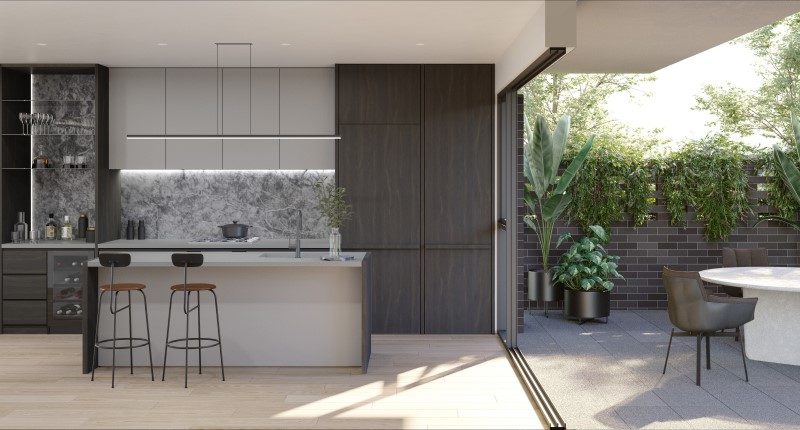When you run out of space to build out, you build up, assuming there are more and more people to be accommodated.
The shift towards apartment dwelling is one of those long, slow inexorable trends that Australians are living with, and perhaps warming to.
“While COVID-19 put space back at the forefront of people’s minds, we see the popularity of apartment and townhome living continuing in 2021 and beyond,” Cedar Woods managing director Nathan Blackburne said.
“Part of this is the desire to socialise and be connected – lockdown made it acutely obvious that we need regular, personal interaction.”
Shoe boxes no more, apartments these days have big kitchens, pantries, rooftop orchards, storerooms, floor to ceiling greenery and loggia.
Loggia, I hear you scream… what on earth is that?
Is this not another case of coastal dwelling urbanites gone mad? Well, property developer Cedar Woods has pronounced on the latest trends in apartments, and the headline is we are expecting more space, light and loggia.
Loggia!
Before you go reaching for Google, a loggia (from the Italian word for ‘lodge’) is a room with one or more open sides. They were common in Roman times with all those fancy colonnades on exterior walls surrounding courtyards.
Popular in Mediterranean countries, these days a loggia is usually a room or hallway with one side open. Think partially enclosed balconies or terraces that feel like a lounge room with an open side, inviting the outside in.
It’s useful where you want a breezy space, cooling you from the sun but otherwise open to the elements. So it could just be a fancy name for a porch or a balcony.

Koos de Keijzer, Principal of DKO architects said there were some key trends arising from the lockdown, including the desire for separate offices, good ventilation, big windows and loggia.
“Customers want fresh air and want to see more greenery both in their homes and in the shared spaces of their complex,” Mr de Keijzer said.
“Sustainability and livability are driving these trends – people are conscious of energy bills and their carbon footprint more than ever. Natural light and natural ventilation, therefore, will only grow in importance.”

Hames Sharley Associate Director Tim Boekhoorn said the boom in online deliveries over the pandemic had increased the demand for safe, cool storage rooms where everything from groceries to clothes could be delivered and stored until the resident gets home from work.
“A degree of customisation above particular price points is now an expectation. Our customer base is more diverse and discerning, and they don’t want ‘cookie cutter’ homes,” Mr Boekhoorn said.
“Biophilic design is coming through strongly – from urban orchards to vegetable patches, green walls and roofs to a focus on pot plants and hanging vines, people want to feel, experience and see greenery throughout their residences.”








